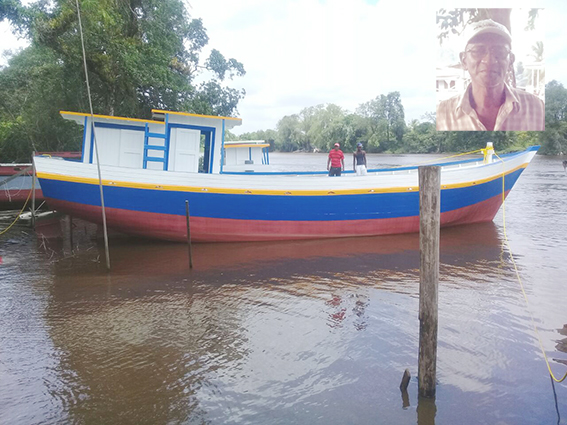If fishing has always been an integral part of Essequibo’s economy there is evidence that the transformation that has descended upon business in the region has rendered the fishing industry increasingly important to the livelihoods of its residents.
One indication of the consolidation of the region’s fishing industry is the patent evidence of the prominence of the boat-building industry. Accordingly, during our visit there two weeks ago Stabroek Business went to meet Leaton ‘Terrence’ Byron who, over time, has garnered a considerable reputation as a boat-builder.
Building fishing vessels is a pursuit in which the sixty-one-year-old has been involved for all of his adult life, having become attached to the trade at the age of sixteen. He began his apprenticeship at Jacklow in the Pomeroon, under the tutelage of Mr Hector Stoll where he spent five years. Two further attachments led him eventually to Charity where the heavy concentration of fishing activity persuaded him to create a business of his own.
These days, Byron says, the growth of Essequibo’s fishing industry has had a strong knock-on effect on boat-building. Both sectors, he says, are witnessing investments from returnees from the interior who have been favoured by returns from the gold-mining industry and whose investments in new ventures, not least, fishing, are beginning to create additional employment opportunities. Still, amidst the considerable competition that obtains he has been able to hold his own, specializing in the creation of the popular Drift Seine vessels. These boats commonly measure sixty-one feet by sixteen feet, the bellies of the vessels being around seven feet deep in order to accommodate the catch.
Modern fishing vessels are fitted with both essential gear and conveniences that include Global Positioning Systems (GPS) and radio set equipment, bunks for crew members, kitchens, huge ice boxes for storing catch and wrenches which, these days, have replaced crews in the hoisting of the laden seines. Byron says that a fully outfitted fishing vessel can cost the investor around $22 million dollars.
The industry provides a livelihood for categories of workers that include loggers. Building a fishing vessel necessitates the acquisition of various species of wood including greenheart, silverballi and mora. Supplies of timber come mostly from loggers operating in the Pomeroon River area. Lumber prices are heavily influenced by weather patterns. During the dry periods when the shallowness of the Pomeroon River means that delivery times are extended, prices increase. He is unable to purchase lumber from the sawmillers as it is more expensive.
The building of a fishing vessel can take between six months and a year. Setting aside the length of time it takes to acquire lumber and to properly cure the lumber, the vessel must be fitted and ribbed before the fashioning of the interior begins. Delays are often occasioned by financial considerations. Investors are not always able to make the full amount of money available at the same time so that it is not uncommon for boats to be lying unfinished for many months. On the other hand smooth, unhindered builders can turn out two or even three vessels in a single year.
The demand for fishing vessels and the ensuing competition among boat builders has steadily pushed prices to the floor. Some of the builders have invested in timber grant concessions, thereby reducing the costs associated with purchasing lumber. To further add to their competitive advantage the more financially stable boat-building enterprises offer hire purchase terms to their clients. That is not a service that Byron can afford to offer.
One of the bigger challenges facing the industry is the scarcity of skilled labour. These days, Byron says, experienced contractors must undertake their own training in order to secure the skills that will enhance the efficiency of their operations. Skills apart, there are also challenges associated with the commitment of workers. “A worker may work for a week or two, disappear for a few weeks,” Byron says.
He has managed to create a limited interest in boat-building among his sons. The problem is that two of them prefer the adventure of the sea so that their availability to support him in the boat-building business is limited to periods when they are not out ‘on the water,’ fishing.
What Byron sees as Essequibo’s long-term dependence on the fishing industry necessitates, he says, the creation of a structured training regime in boat-building which he believes can be provided by the Essequibo Technical Institute. Making the point, perhaps, that his own days in the strenuous pursuit of boast-building might be numbered he is, he says, disposed to contributing still further to the fishing industry by helping to train the young men who must carry on the trade when he finally decides to call it a day.










